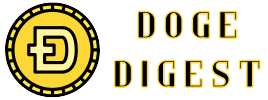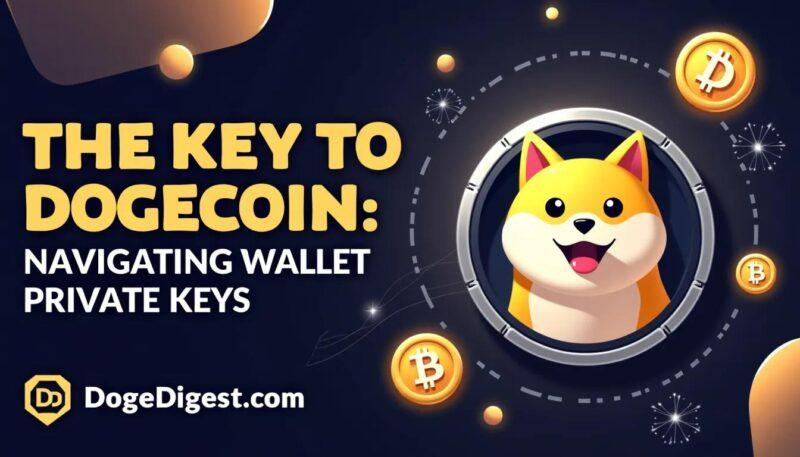In the ever-evolving world of cryptocurrency, Dogecoin has carved out its own unique place-part internet meme, part serious investment. As more enthusiasts jump on the Dogecoin bandwagon, the importance of safeguarding these digital tokens grows hand in hand. But keeping your Dogecoin secure isn’t just about having a wallet; it’s about knowing how to protect it effectively from the myriad of online threats. In this article, we’ll explore the top tips for wallet security, helping you guard your Dogecoin with confidence and peace of mind.
Choosing the Right Wallet for Your Dogecoin
Security, usability, and compatibility form the trifecta of priorities when securing your Dogecoin holdings. Given the fast-paced evolution of cryptocurrency wallets, it’s essential to evaluate which tools offer robust encryption, seamless access, and support for Dogecoin’s unique blockchain. Hardware wallets stand out for their cold storage approach, safely isolating private keys from online environments. However, if you prefer convenience, carefully vetted software wallets can strike a balance-just be sure they’re from reputable sources and updated regularly.
When considering convenience versus security, hot wallets such as mobile apps or browser extensions provide quick access but expose you to greater online risks. On the other hand, cold wallets like USB devices or paper backups keep your keys offline, drastically reducing exposure to hacks but requiring extra caution to avoid physical loss or damage. Your choice depends on how often you trade or spend Dogecoin and your comfort level with managing backup processes.
Below is a quick comparison to help you frame your decision:
| Wallet Type | Security Level | Accessibility | Ideal For |
|---|---|---|---|
| Hardware Wallet | Very High | Moderate | Long-term holders, large sums |
| Mobile Wallet | Medium | High | Everyday users, active traders |
| Desktop Wallet | High | Moderate | Users with secure computers |
| Paper Wallet | Very High | Low | Cold storage, backup copies |
In summary, choosing the right option means aligning your wallet’s attributes with your routine, risk tolerance, and technical know-how. Combining a primary hardware wallet with a secondary hot wallet can offer an optimal mix of security and flexibility-ensuring your Dogecoin is both guarded and accessible when you need it.
Enhancing Security with Strong Passwords and Two-Factor Authentication
When it comes to securing your Dogecoin wallet, a fortified password is your first line of defense. Opt for a complex, unique passphrase that combines uppercase letters, numbers, and symbols, steering clear of easily guessable information like birthdays or pet names. Remember, longer passwords exponentially increase security, so aim for at least 12 characters.
Beyond passwords, adding an extra layer of protection through Two-Factor Authentication (2FA) significantly reduces the risk of unauthorized access. By requiring a second form of verification-typically a time-sensitive code from an authenticator app or a hardware token-you create a formidable barrier that hackers find challenging to bypass. Enable 2FA on all services linked to your crypto wallet to maximize safety.
| Security Step | Why It Matters |
|---|---|
| Strong Passwords | Prevents brute force and guessing attacks |
| Two-Factor Authentication | Blocks access without secondary verification |
| Regular Updates | Fixes vulnerabilities in wallet software |
Keeping Your Private Keys Safe and Offline
Offline storage is the gold standard when it comes to securing your Dogecoin private keys. By keeping your keys off connected devices, you eliminate the risk of remote hacks, malware, and phishing attacks. This means your precious crypto isn’t just locked away – it’s armored in a digital fortress inaccessible through the internet.
One of the most reliable methods is using cold wallets such as hardware wallets or paper wallets. Hardware wallets store your private keys in a dedicated device that stays offline except when necessary for transactions. Paper wallets, on the other hand, involve printing your keys and addresses on physical paper and storing it somewhere safe, like a fireproof safe or a secure deposit box.
- Pros of Hardware Wallets: Enhanced security, ease of use, firmware updates.
- Pros of Paper Wallets: No digital footprint, impervious to online threats.
| Storage Type | Security Level | Convenience |
|---|---|---|
| Hardware Wallet | High | Moderate |
| Paper Wallet | Very High | Low |
| Software Wallet (Offline) | Moderate | High |
Regular Backups and Recovery Planning for Peace of Mind
Consistency is your best defense. Regularly backing up your Dogecoin wallet ensures that even if your device fails or is compromised, you can restore access without losing your precious holdings. Storing backups on multiple devices or secure cloud services minimizes risk, but always favor encrypted storage to keep your recovery data safe from prying eyes.
Crafting a solid recovery plan means knowing in advance how you’ll respond to emergencies. Document the locations of backups, keep your recovery phrases offline, and consider creating an emergency contact list-trusted individuals who can assist if you’re temporarily locked out or incapacitated. Preparation minimizes panic and makes recovery swift and painless.
- Encrypt backups to guard against unauthorized access.
- Update backups after every significant transaction or wallet change.
- Verify recovery phrases periodically to avoid surprises during restoration.
| Backup Medium | Pros | Cons |
|---|---|---|
| USB Drive | Portable, offline storage | Can be lost or damaged |
| Paper Wallet | Immune to digital hacks | Prone to physical destruction |
| Encrypted Cloud Storage | Accessible anywhere, redundancy | Must trust service provider |
Recognizing and Avoiding Common Scams and Phishing Attempts
In the rapidly evolving world of cryptocurrency, scammers constantly devise new tactics to exploit unsuspecting investors. One of the most prevalent threats comes in the form of phishing attempts, where malicious actors masquerade as trusted entities to steal your sensitive information. Always remain skeptical of unsolicited emails or messages requesting your wallet credentials or private keys. Remember, legitimate services will never ask you to disclose your private key or recovery phrase.
To safeguard your Dogecoin funds, familiarize yourself with common scam red flags. These include:
- Urgency or pressure tactics: Scammers often urge immediate action to bypass rational decision-making.
- Suspicious URLs: Double-check website addresses for subtle misspellings or odd domain extensions.
- Unsolicited offers or airdrops: If it sounds too good to be true, it usually is.
Below is a quick reference to identify common phishing methods alongside smart defensive actions:
| Phishing Method | How to Identify | Protective Measure |
|---|---|---|
| Fake Wallet Apps | Low ratings and odd permissions | Download only from official sources |
| Impersonation Messages | Unexpected requests for wallet info | Verify sender identity before responding |
| Phishing Emails | Spelling errors & mismatched URLs | Use email filters and check URLs thoroughly |
Q&A
Q&A: Guarding Your Dogecoin – Top Tips for Wallet Security
Q1: Why is securing my Dogecoin wallet so important?
A1: Your Dogecoin wallet is essentially your digital treasure chest. If someone else gains access, your coins can vanish instantly-no bank to call, no chargebacks. Keeping your wallet secure ensures your Dogecoin stays truly yours.
Q2: What types of wallets are available for storing Dogecoin?
A2: There are several options: hardware wallets (physical devices), software wallets (apps on your computer or phone), and paper wallets (printed keys). Each has its own balance of convenience and security, with hardware wallets generally offering the toughest protection.
Q3: How can I create a strong password for my wallet?
A3: Think of your password as a fortress door-it should be long, unique, and unpredictable. Use a mix of letters, numbers, and symbols, and avoid obvious choices like birthdays or common words. Password managers can help you craft and remember complex passwords.
Q4: What role does two-factor authentication (2FA) play?
A4: Two-factor authentication adds an extra lock-after entering your password, you provide a second seal, like a code from your phone. This makes it much harder for intruders to break in, even if they get hold of your password.
Q5: Should I store my wallet’s private keys offline?
A5: Absolutely. Private keys are the keys to your Dogecoin kingdom. Keeping them offline-in a hardware wallet or written on paper stored safely-prevents hackers from stealing them via internet attacks.
Q6: Are public Wi-Fi networks safe for accessing my Dogecoin wallet?
A6: Public Wi-Fi is a playground for cybercriminals. Avoid logging into your wallet over open networks or use a reliable VPN to create a secure tunnel for your data.
Q7: How often should I back up my wallet?
A7: Regular backups are your safety net against device failure or accidental deletion. Back up anytime you receive Dogecoin or make significant changes, and store these backups in multiple secure locations.
Q8: What common mistakes should I avoid to protect my Dogecoin?
A8: Beware phishing scams, don’t share your private keys, avoid downloading wallet apps from untrusted sources, and never ignore software updates. These small slips can open doors to theft.
Q9: Can I recover my Dogecoin if I lose my private keys?
A9: Unfortunately, no. Private keys are unique and irreplaceable. Losing them is like losing your keys to a locked safe-no one else can open it, and your coins remain inaccessible forever.
Q10: Any final advice for Dogecoin holders?
A10: Stay vigilant. The crypto world is exciting but demands careful stewardship. Treat your wallet security like you would any valuable-lock it up tight, keep backups, and stay informed about best practices. Your Dogecoin will thank you!
Closing Remarks
Whether you’re a casual holder or a dedicated Dogecoin enthusiast, safeguarding your digital assets is a responsibility that shouldn’t be taken lightly. By implementing strong passwords, enabling two-factor authentication, regularly updating your software, and choosing the right wallet solution, you create a fortress around your Dogecoin. Remember, in the world of cryptocurrency, security isn’t just a precaution-it’s your best investment. Stay vigilant, stay informed, and let your Dogecoin journey be as safe as it is exciting.






